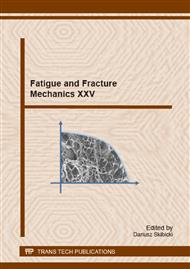p.118
p.124
p.133
p.139
p.145
p.151
p.157
p.167
p.175
Method for Monitoring the Destruction Process of Materials Using a High-Speed Camera and a Catodioptric Stereo-Vision System
Abstract:
The article presents a method for monitoring the destruction process of materials under mechanical load on a universal testing machine. Observations of the subjects are made using a high-speed camera and a catadioptric stereo-vision system. The camera allows for data acquisition with the capture speed more than a million frames per second (FPS) with reduced resolution. Catadioptric vision systems use mirrors and lenses in order to modify the observation path. In the proposed system four mirrors are required to divide the observation path into two separate paths. This enables monitoring the test specimens from different perspectives, which provides a number of advantages including information redundancy or stereovision. In order to verify the proposed method several metal specimens were put under mechanical load and monitored with the vision system. Test results are enclosed in the article. Selected registered images presenting the moment of the destruction are described in greater detail with data about the capture speed provided. The tests were conducted under front and back lighting in order to assess the best method of illumination.
Info:
Periodical:
Pages:
145-150
Citation:
Online since:
November 2014
Authors:
Price:
Сopyright:
© 2015 Trans Tech Publications Ltd. All Rights Reserved
Share:
Citation:


